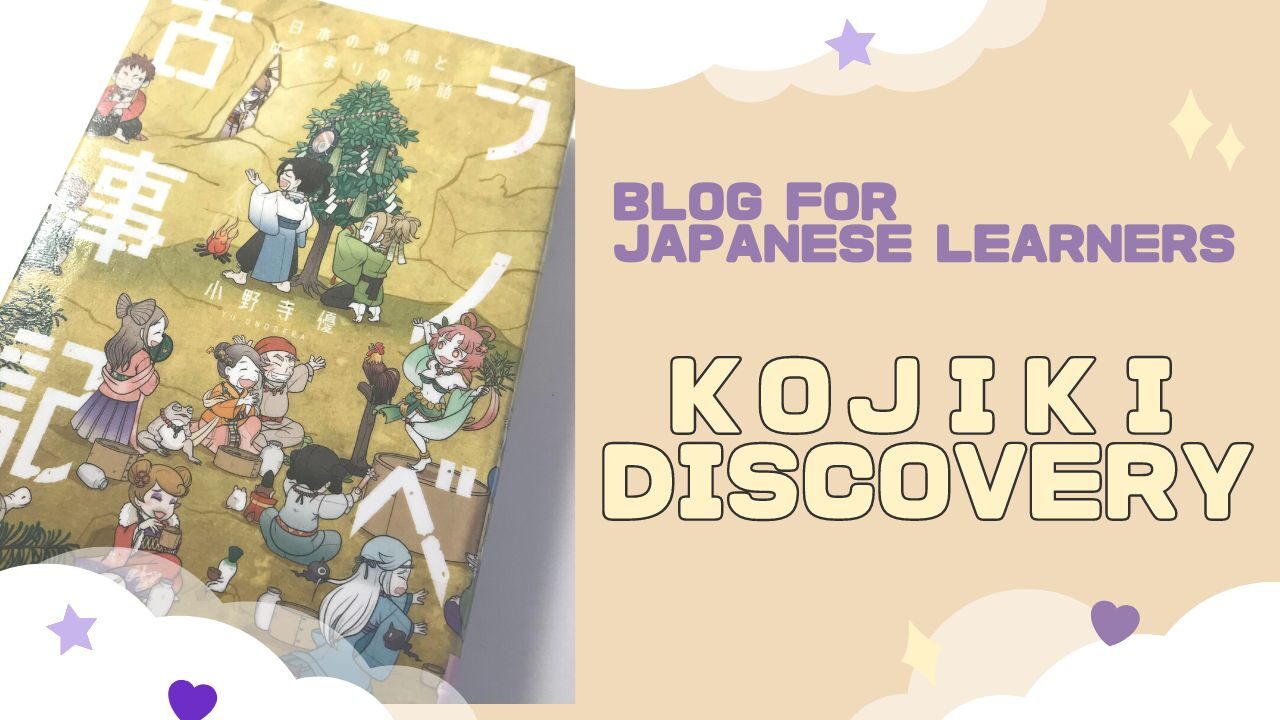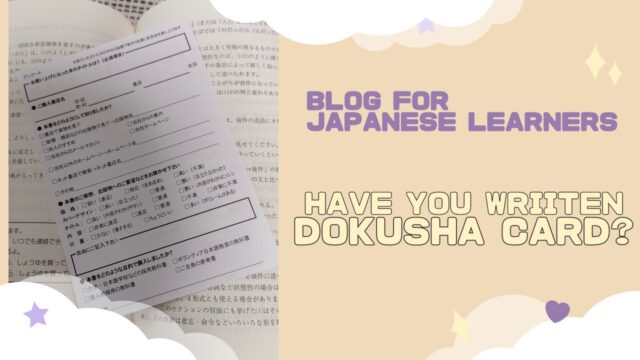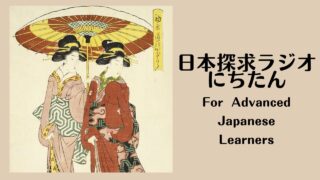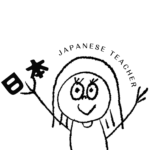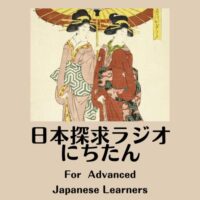みなさん、こんにちは~。Hi, everyone.
日本語のブログです。英語もあります。This is a blog for Japanese learners with English.
丁寧体・中級レベルで書いています。I write in polite style and intermediate level Japanese.
ブログ|Blog
みなさん、こんにちは。毎日(まいにち)暑(あつ)いですね。いかがお過(す)ごしでしょうか。
Hello everyone. It is hot every day. How are you doing?
私(わたし)は今(いま)『ラノベ古事記(こじき)』を読(よ)んでいます。
I read ”KOJIKI light novels ver.” now.
ラノベとはライトノベルのことです。小説(しょうせつ)の分類(ぶんるい)の中(なか)の一つ(ひとつ)で、若者(わかもの)向(む)けの娯楽(ごらく)小説(しょうせつ)と言(い)われていますが明確(めいかく)な定義(ていぎ)はありません。
Ranobe means light novels/young adult books. It is one of the novels and is said to be an entertainment novel for young people, but there is no clear definition.
ライトノベルは文体(ぶんたい)が読(よ)みやすく、可愛(かわい)いイラスト(illustration)が添(そ)えられていることが多(おお)いです。この本(ほん)のイラストも可愛(かわい)いです。
Light novels are easy to read and are often accompanied by cute illustrations. The illustrations in this book are also cute.
古事記(こじき)は日本神話(にほんしんわ)から始(はじ)まる日本最古(にほんさいこ)の歴史書(れきししょ)です。奈良時代(ならじだい)、712年代(ねんだい)に書(か)かれました。
KOJIKI is the oldest book in Japan which tells us Japanese myths and the beginnings of our emperors. It was written in AD.712, Nara-period.
古事記(こじき)は歴史(れきし)の授業(じゅぎょう)で必(かなら)ず習(なら)うので、日本人(にほんじん)は絶対(ぜったい)にこの名前(なまえ)を知(し)っています。
All Japanese people know this word because KOJIKI is always taught at school.
でも授業(じゅぎょう)では「古事記(こじき)…日本最古(にほんさいこ)の歴史書(れきししょ)。稗田阿礼(ひえだのあれ)によみならわせ、太安万侶(おおのやすまろ)が筆録(ひつろく)した。」くらいにしか習(なら)わないので、内容(ないよう)は全然(ぜんぜん)知(し)りません。
But in class, we only learn KOJIKI is a Japan’s oldest history book, so we rarely know about it.
日本人(にほんじん)そして日本語教師(にほんごきょうし)として、古事記(こじき)の内容(ないよう)を知(し)りたい!
As a Japanese and a Japanese teacher, I want to know about KOJIKI!
原書(げんしょ)は昔(むかし)の日本語(にほんご)で書(か)かれていて読(よ)めないので、解説本(かいせつぼん)を読(よ)むことになります。
The original book is written in old Japanese and is unreadable, so I read the commentary book.
ところが、ほとんどの解説本が難しくて読み進められない。その理由の一つはたくさんの登場人物(とうじょうじんぶつ)(主(おも)に神様(かみさま))でわけがわからないことです…挫折(ざせつ)_| ̄|○
However, most commentary books are too difficult to read. One of the reasons for this is that there are so many characters (mainly gods) that it is difficult to understand.
So confusing!
ということでこの『ラノベ古事記(こじき)』にたどり着(つ)きました。
And then I found this book!
この本(ほん)はライトノベルなので、かなり簡単(かんたん)な日本語(にほんご)で書(か)かれていて読(よ)みやすい。そして登場人物(とうじょうじんぶつ)にイラストがありイメージ(image)しやすく、キャラ(character)が誇張(こちょう)されているので、誰(だれ)がだれかわかる!
The book is written in easy way, and the illustrations of the characters make it easy to visualize. The character is exaggerated so it is easy to understand.
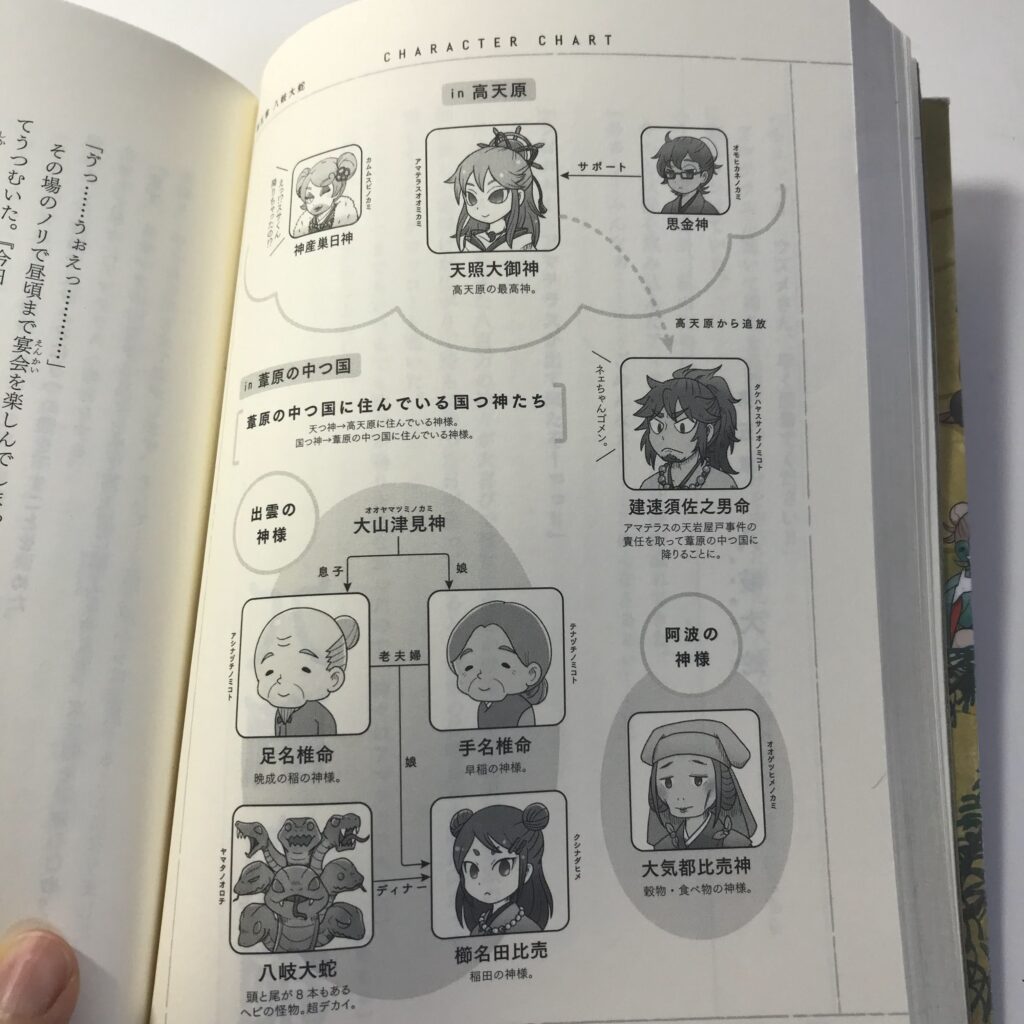
面白(おもしろ)おかしく書(か)かれているので原書(げんしょ)に忠実(ちゅうじつ)でない部分(ぶぶん)もありますが、まずは古事記(こじき)の大枠(おおわく)を把握(はあく)するのにピッタリの本(ほん)でした。
The book is written in a hyperbolic expression, so some parts are not faithful to the original, but it is a perfect book to grasp the general framework of the KOJIKI first.
日本(にほん)はどうやってできたのかが楽(たの)しくわかります。
I learned how Japan was created with fun.
この本(ほん)の英語(えいご)サイトもあります。興味(きょうみ)があるかたはぜひ見(み)てみてください。
There is also an English website for this book. Check it out if you are interested.
THE JAPANESE MYTHOLOGY “KOJIKI”

単語|Words
- 分類(ぶんるい)…classification
- 明確(めいかく)な…明(あき)らかな、clear
- 定義(ていぎ)…definition
- 添(そ)える…add
- 原書(げんしょ)…the original book
- 解説本(かいせつぼん)…commentary book
- 誇張(こちょう)する…exaggerate
- 忠実(ちゅうじつ)な…faithful, close to~

